...and then,
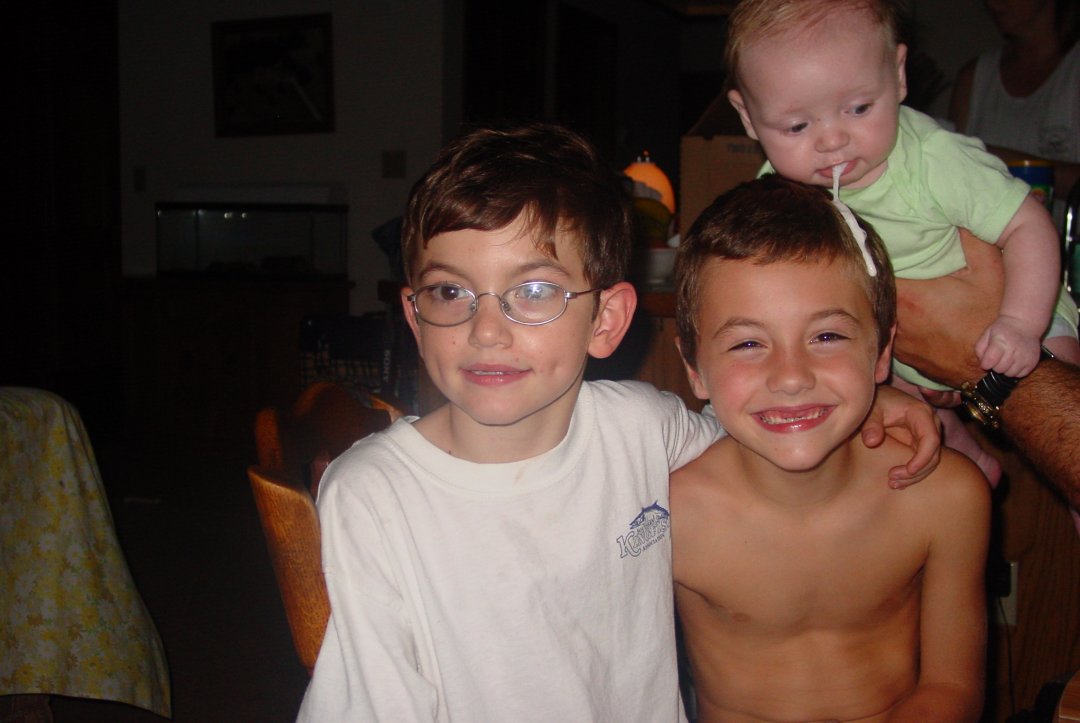
just as I snapped the picture!
See
what happens to these two pictures ...

when
you get up, and back away from them.
Come
on now ... This can't be for real!
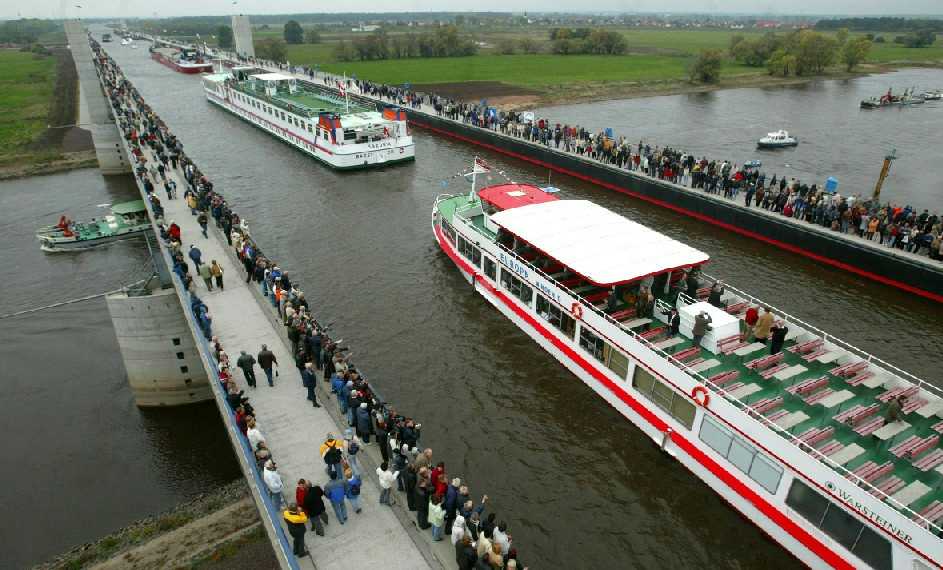
Yes,
it is ... This is a real water-bridge!
This
is a channel-bridge over the River Elbe and joins the former East
and West
Germany, as part of the unification project. It is located in the
city of Magdeburg,
near Berlin. Construction of the water link was started as early as
the 1930s but
due to World War II and subsequent division of Germany the work remained
suspended until 1997. The aqueduct was finally completed and opened
to
the public in 2003. This photo was taken on the day of its inauguration.
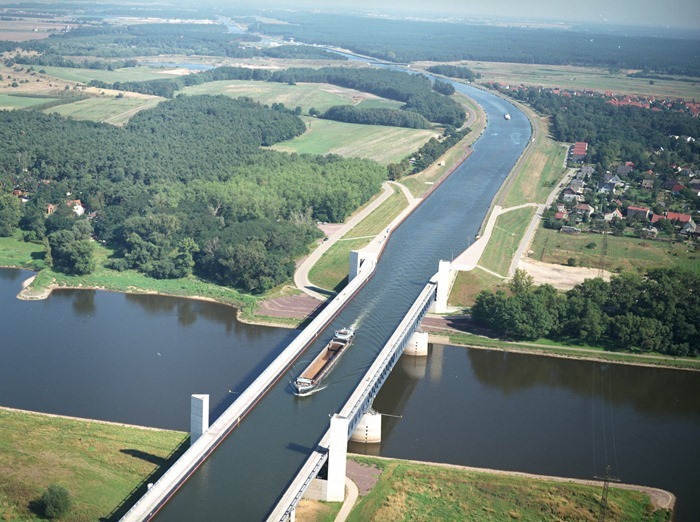
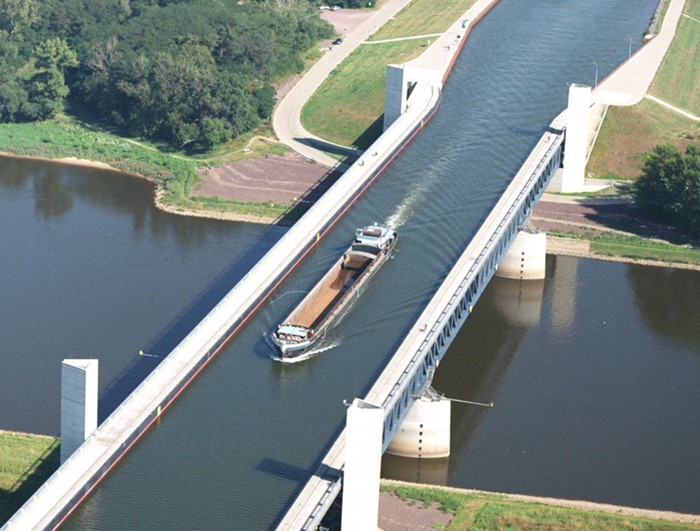
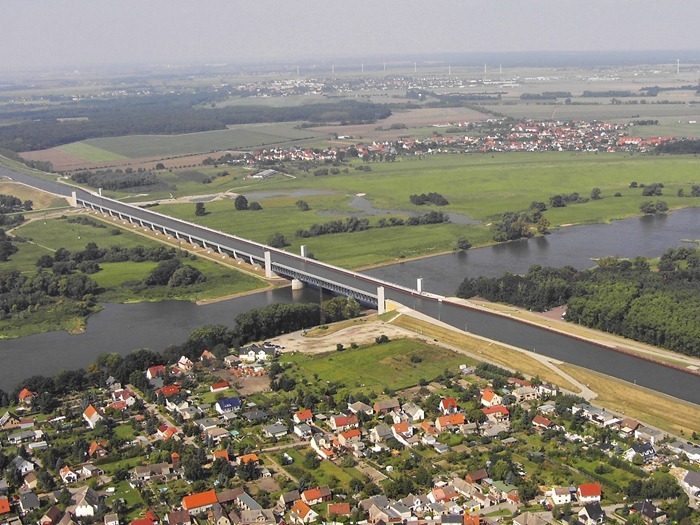
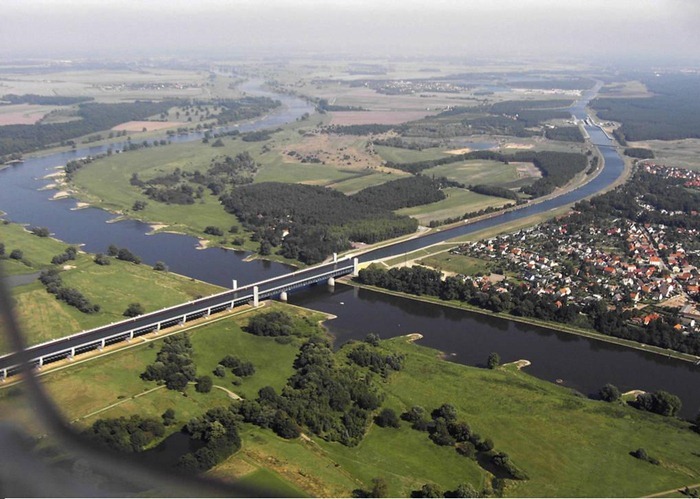
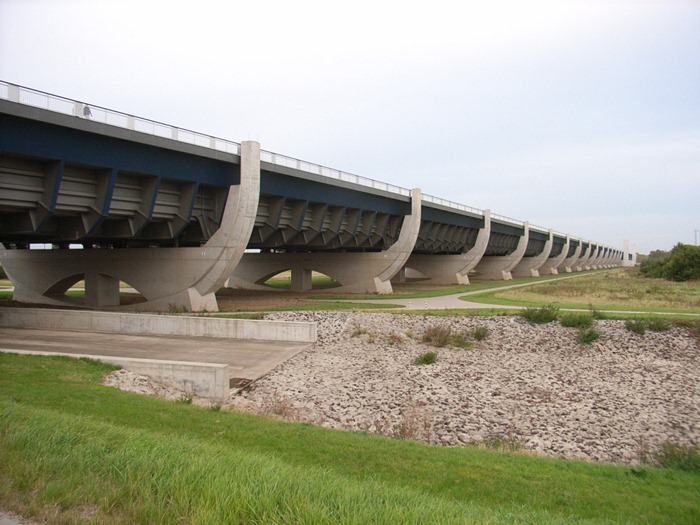
What a feat! Six years, 500 million euros, 918 meters long.
To
those who appreciate engineering projects, here's a puzzle for you
armchair engineers and physicists.
Question:
Did that bridge have to be designed to withstand the additional weight
of ship and barge traffic, or just the weight of the water?
Answer:
It only needs to be designed to withstand the weight of the water!
Why?
A ship always displaces an amount of water that weighs the same as
the ship, regardless of how heavily a ship may be loaded.
This bridge is a navigable aqueduct in Germany that connects the Elbe-Havel
Canal to the Mittelland Canal, and allows ships to cross over the
Elbe River.
At 918 meters, it is the longest navigable aqueduct in the world.
The Elbe-Havel and Mittelland canals had previously met near Magdeburg
but on opposite sides of the Elbe. Ships moving between the two had
to make a 12-kilometer detour, descending from the Mittelland Canal
through the Rothensee boat lift into the Elbe, then sail downstream
on the river, before entering the Elbe-Havel Canal through Niegripp
lock. Low water levels in the Elbe often prevented fully laden canal
barges from making this crossing, requiring time-consuming off-loading
of cargo. --
Oh,
happy day!
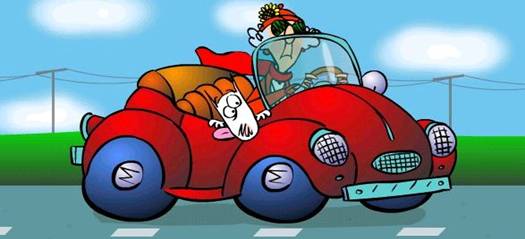
After starting a new diet I altered my drive to work
to avoid passing my
favorite bakery. I accidentally drove by the bakery this morning,
and as
I approached, there in the windows were a host of goodies. I felt
this was
no accident, so I prayed ... "Lord, it's up to you, if you want
me to have any
of those delicious goodies, create a parking place for me directly
in front
of the bakery." And sure enough, on the eighth time around ,
there it was!
GOD IS SO GOOD!
THE
DEAL
Jesus
was wandering around Jerusalem when he
decided that he really needed a new robe.
After looking around for awhile, he
saw a sign for Finkelstein, the Tailor.
So, he went in and made the necessary arrangements
to have Finkelstein prepare a new robe for him.
A few days later, when the robe was finished,
Jesus tried it on -- and it was a perfect fit!
He asked how much he owed.
Finkelstein brushed him off: "No, no, no,
for the Son of God there's no charge!
However, may I ask for a small favor. Whenever
you give a sermon, perhaps you could just
mention that your nice new robe was made
by Finkelstein, the Tailor?"
Jesus readily agreed and as promised,
extolled the virtues of his Finkelstein robe
whenever he spoke to the masses.
A few months later, while Jesus was again
walking through Jerusalem he happened to
walk past Finkelstein's shop and noted a huge
line of people waiting for Finkelstein's robes.
He pushed his way through the crowd to speak to him
and as soon as Finkelstein spotted him he said: "Jesus,
Jesus, look what you've done for my business!
Would you consider a partnership?"
"Certainly," replied Jesus.
"Jesus & Finkelstein it is."
"Oh, no, no," said Finkelstein.
"Finkelstein & Jesus.
After all, I am the craftsman."
The two of them debated this for some time.
Their discussion was long and spirited, but ultimately
fruitful -- and they finally came up with a mutually
acceptable compromise. A few days later,
the new sign went up over Finkelstein's shop:
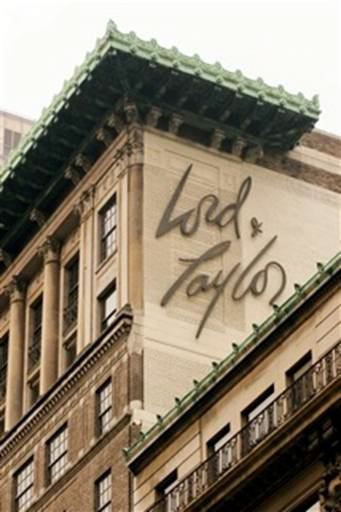








More Web sites by
KhalsaWebMasters.com

